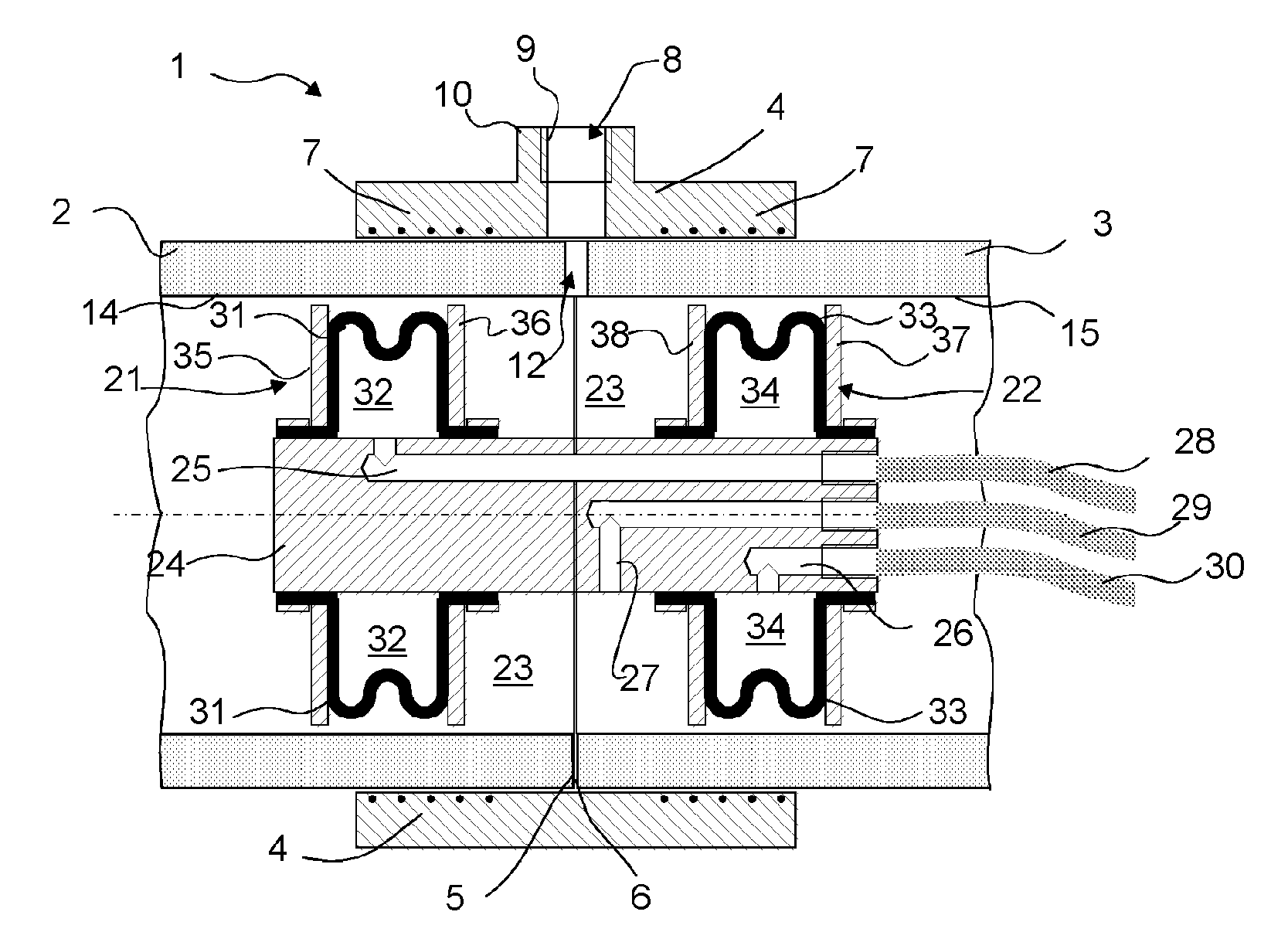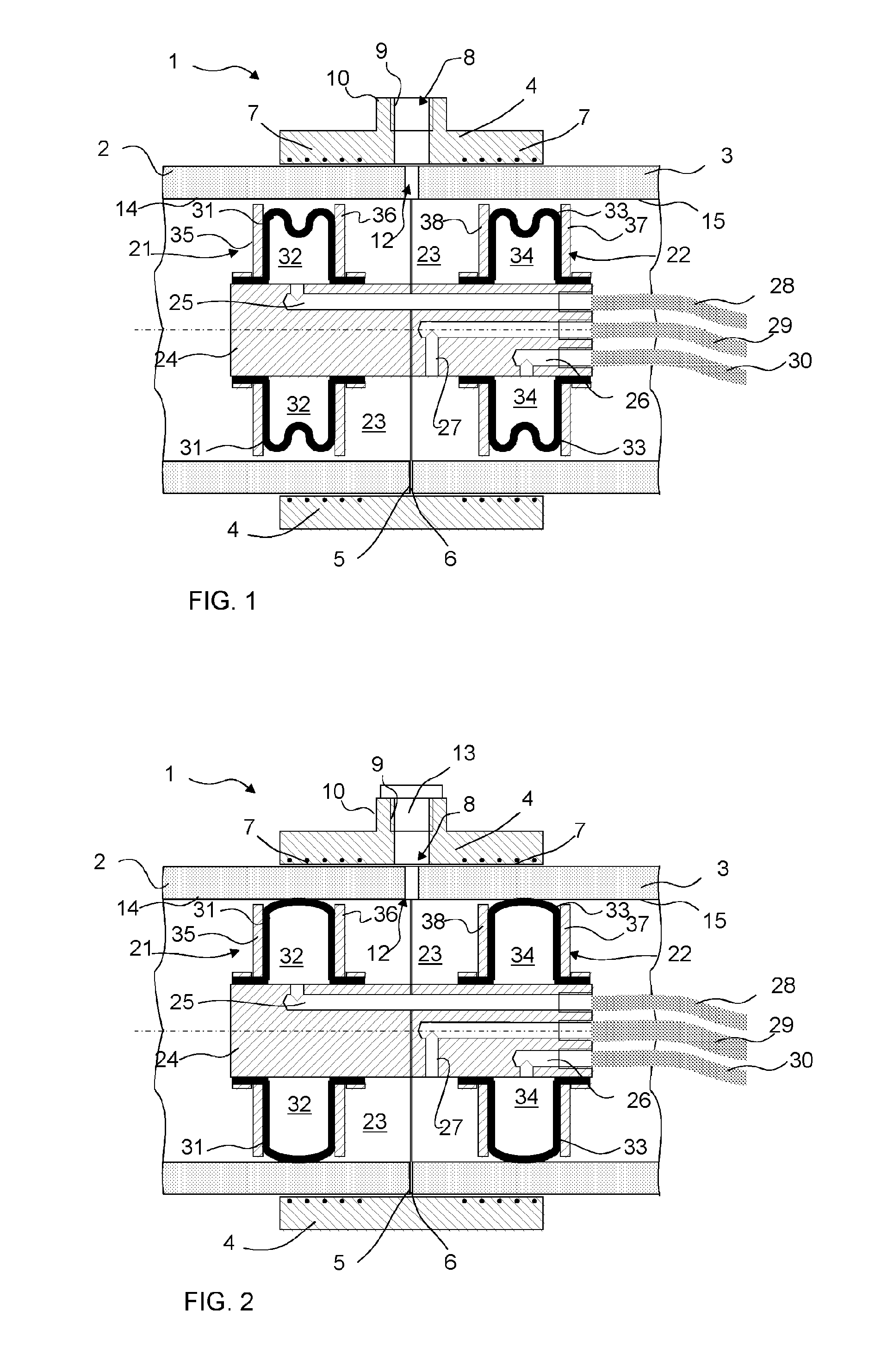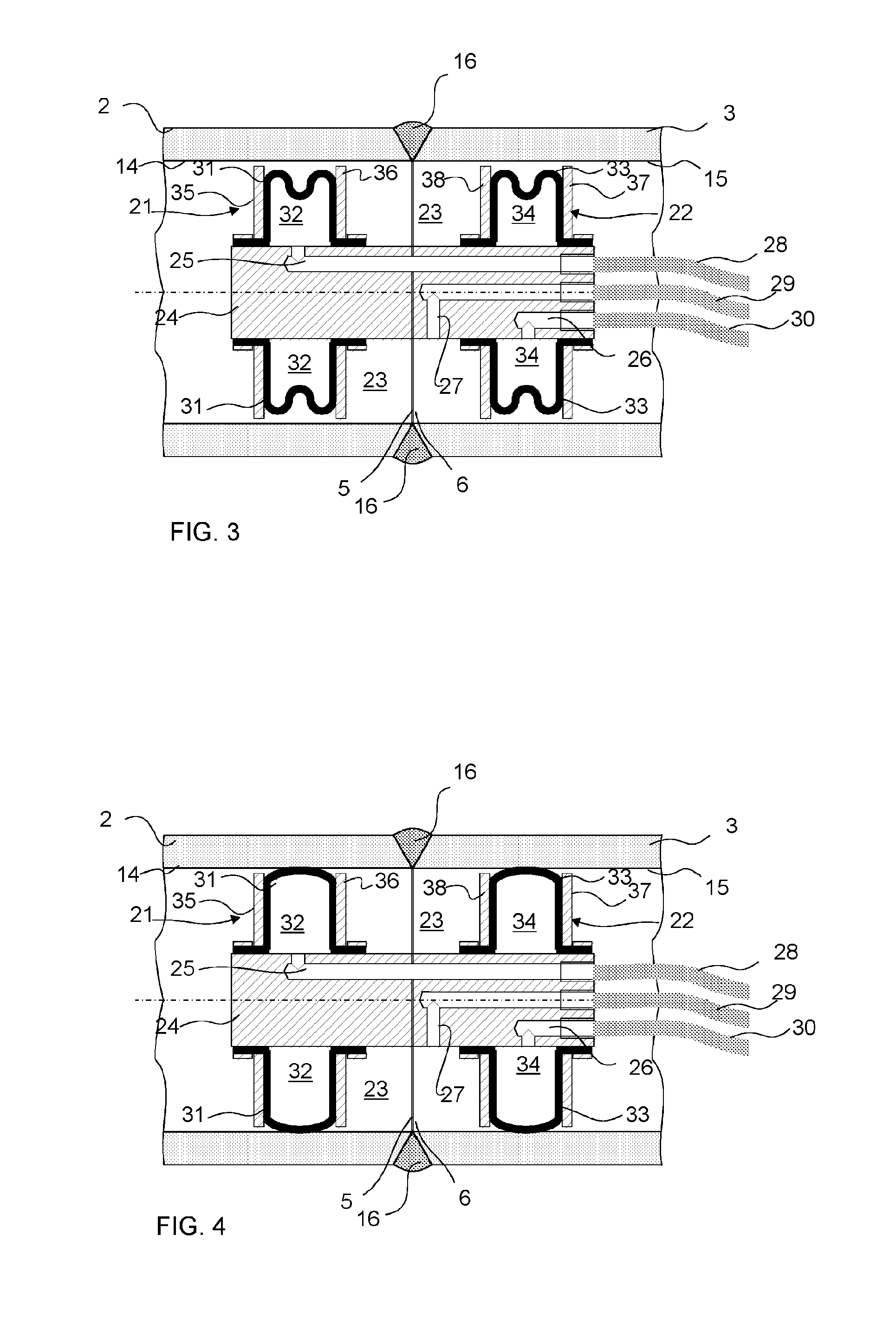Method and apparatus for pressure testing a pipe joint
- Summary
- Abstract
- Description
- Claims
- Application Information
AI Technical Summary
Benefits of technology
Problems solved by technology
Method used
Image
Examples
Embodiment Construction
[0016]FIGS. 1 and 2 present a sectioned part of a pipe joint 1 applying a sleeve part 4. In the joint two pipe parts 2 and 3 are connected together end-on-end, in which case the butt end 5 of the first pipe part 2 is against the butt end 6 of the second pipe part 3. The butt end sections of the pipe parts 2, 3 are arranged into the bushing, i.e. into the sleeve part 4. The sleeve part 4 comprises heating means 7, such as thermal resistance wires 7, which warm up when electric current is conducted into them. Connection points (not presented) that are per se prior art can be arranged in the sleeve part 4, which connection points are connected to thermal resistance wires and to which connection points electric current is connected. As a consequence of the heating of the heating means 7, typically resistance wires, a joint forms between the sleeve part 4 and the pipe parts 2, 3 in a manner that is per se known in the art. In the joining of thermoplastic pipes this is, per se, prior art....
PUM
| Property | Measurement | Unit |
|---|---|---|
| Pressure | aaaaa | aaaaa |
| Distance | aaaaa | aaaaa |
Abstract
Description
Claims
Application Information
 Login to View More
Login to View More - R&D
- Intellectual Property
- Life Sciences
- Materials
- Tech Scout
- Unparalleled Data Quality
- Higher Quality Content
- 60% Fewer Hallucinations
Browse by: Latest US Patents, China's latest patents, Technical Efficacy Thesaurus, Application Domain, Technology Topic, Popular Technical Reports.
© 2025 PatSnap. All rights reserved.Legal|Privacy policy|Modern Slavery Act Transparency Statement|Sitemap|About US| Contact US: help@patsnap.com



